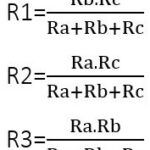What is CRS in LTE?
Let me explain to you what CRS, or Common Reference Signals, are in LTE. If you’ve been following our previous discussions, you’re likely aware of the importance of signal quality in mobile networks. The role of CRS is central to ensuring that LTE devices (User Equipment or UE) can efficiently connect and maintain a stable link to the network. Now, let’s dive deeper into what CRS is and why it’s crucial in the LTE network design.
In LTE, CRS refers to a set of reference signals transmitted by the eNodeB (evolved NodeB) at regular intervals. These signals serve as a reference for the UE to measure the quality of the signal from the base station and help it make critical decisions about mobility, scheduling, and link adaptation.
What is the role of CRS? The main purpose of CRS is to enable the UE to estimate the channel quality, perform measurements, and make decisions about how best to communicate with the eNodeB. These signals are essential for cell search, synchronization, and handovers. The CRS is transmitted on all Resource Blocks (RBs) in the downlink and allows the UE to determine the Radio Signal Strength Indicator (RSSI) and other vital parameters such as Reference Signal Received Power (RSRP) and Reference Signal Received Quality (RSRQ).
How does CRS work? CRS signals are broadcasted by the eNodeB during the LTE transmission. These signals help the UE to perform tasks like:
- Cell Search: When the UE first powers on, CRS signals allow it to search for available cells and synchronize with the LTE network.
- Channel Estimation: The UE uses CRS to estimate the channel quality and adjust its communication parameters (like modulation and coding scheme) for optimal performance.
- Mobility Management: CRS assists in handover processes, ensuring that the UE can successfully transition between cells while maintaining the connection quality.
What makes CRS different from other reference signals? CRS is unique because it is transmitted on every Resource Block (RB) and is not dedicated to any particular user. This means that all UEs in a given coverage area can receive CRS signals, allowing them to measure the network performance without any interference. Other reference signals like the DM-RS (Demodulation Reference Signal) are specific to the data transmission and are used for different purposes, such as demodulation.
How does CRS impact the performance of LTE? The quality of CRS directly impacts the ability of the UE to connect, maintain, and switch between cells. For example, if the CRS signal is weak or corrupted, the UE might experience poor performance, with slow data speeds or even dropped connections. On the other hand, a strong CRS enables the UE to optimize its communication with the eNodeB and adapt to changes in the network conditions. This is why CRS is a fundamental part of LTE’s ability to provide high-speed, reliable service.
As we explored earlier, Reference Signal Received Power (RSRP) and Reference Signal Received Quality (RSRQ) are key measurements in LTE networks, and both rely heavily on CRS for accurate assessment. The measurement of RSRP and RSRQ is performed by the UE based on the CRS, and these values are used for handovers, cell selection, and ensuring optimal service quality.
In conclusion, CRS is essential for LTE network operations, allowing devices to assess network conditions, maintain quality service, and enable seamless mobility. Understanding CRS and how it fits into the overall LTE architecture helps us appreciate the sophisticated mechanisms that make modern mobile networks work efficiently.


